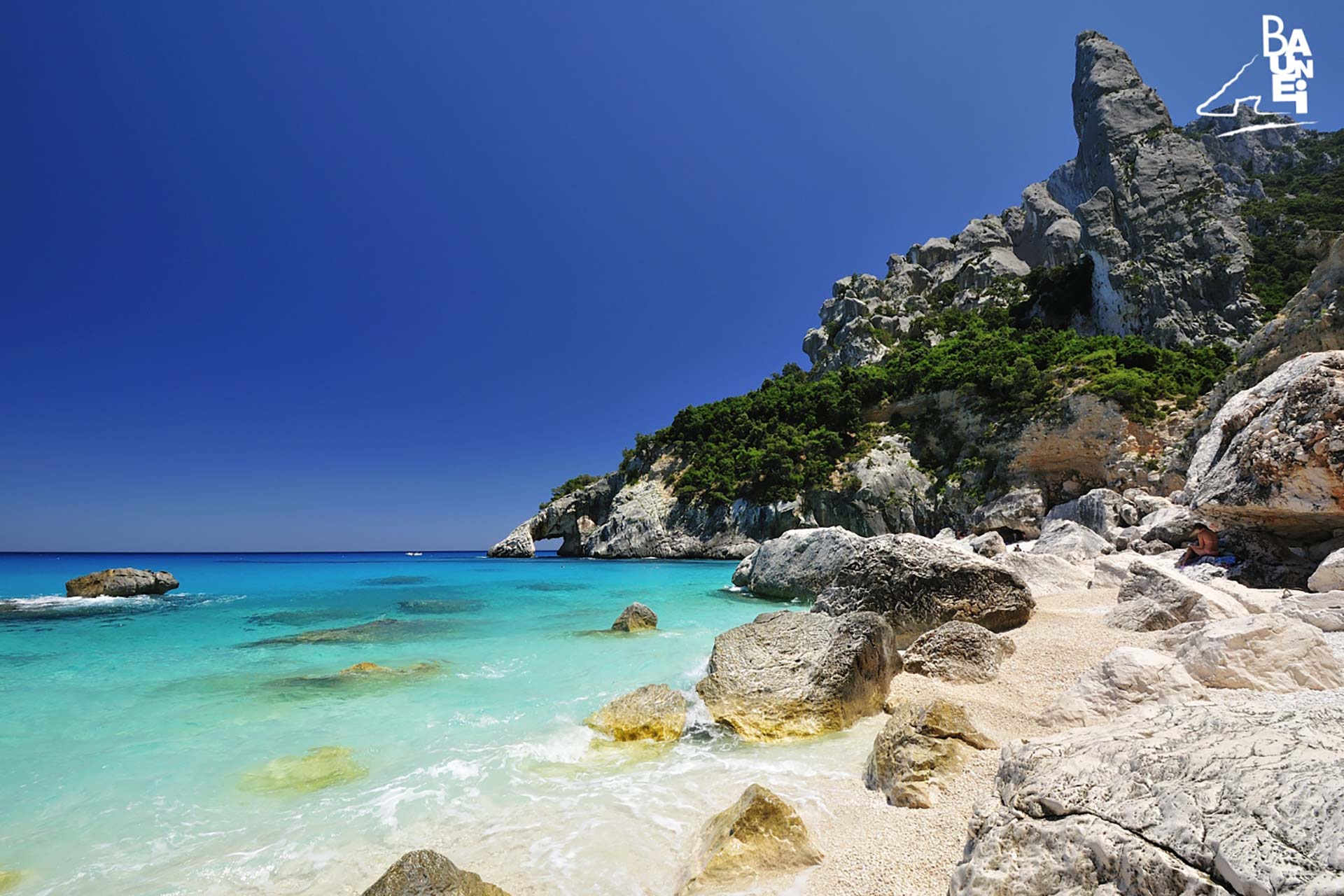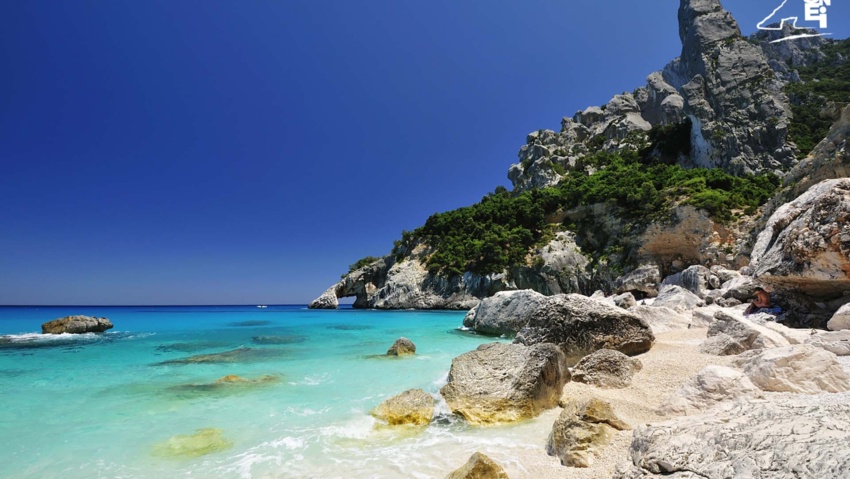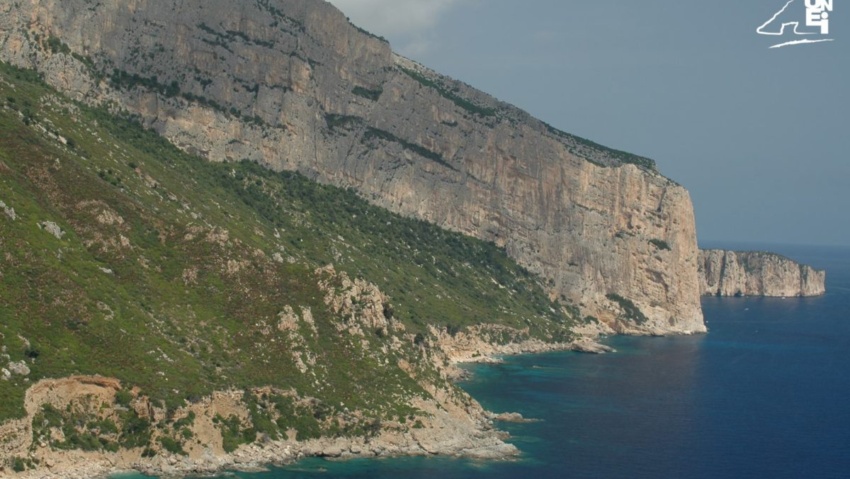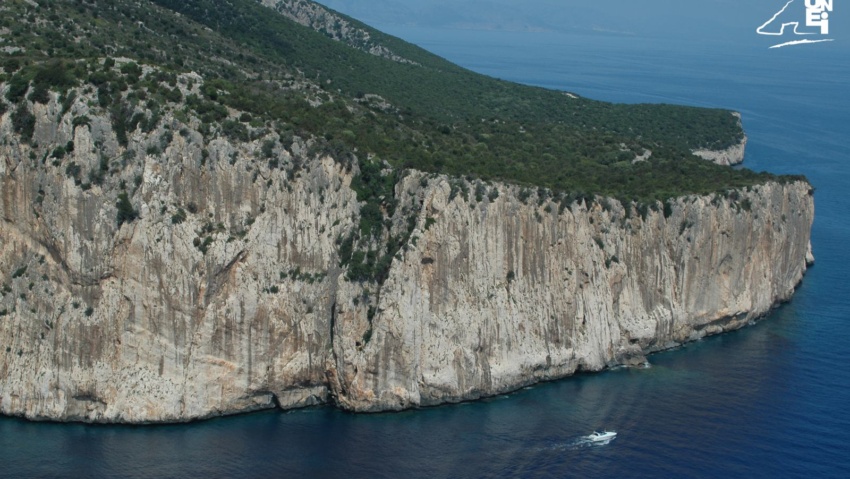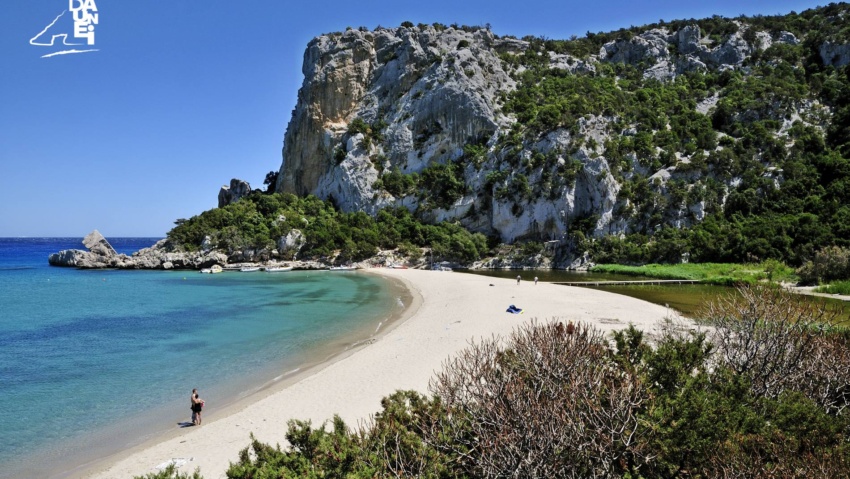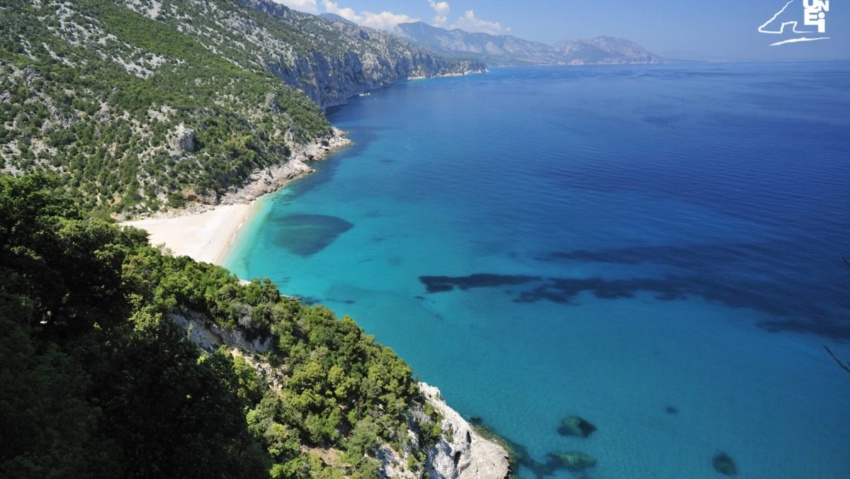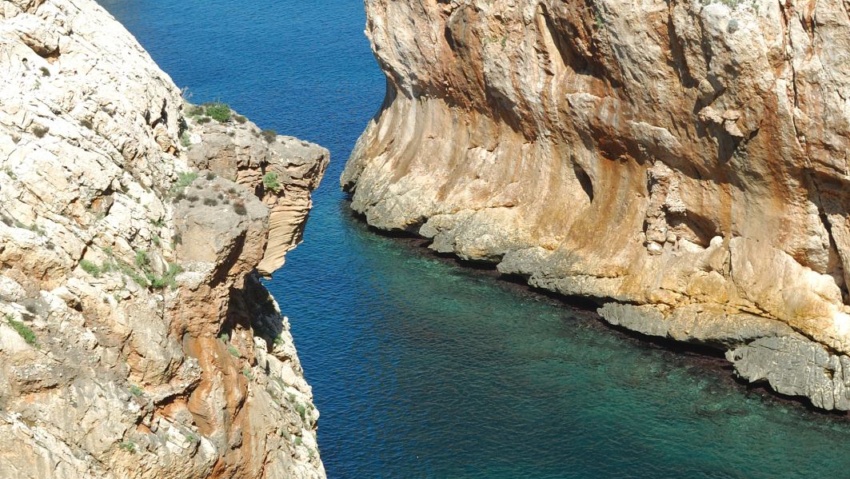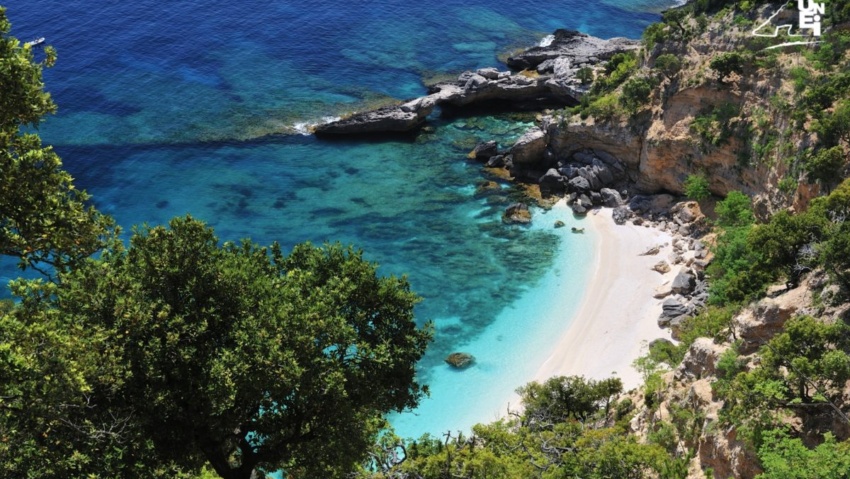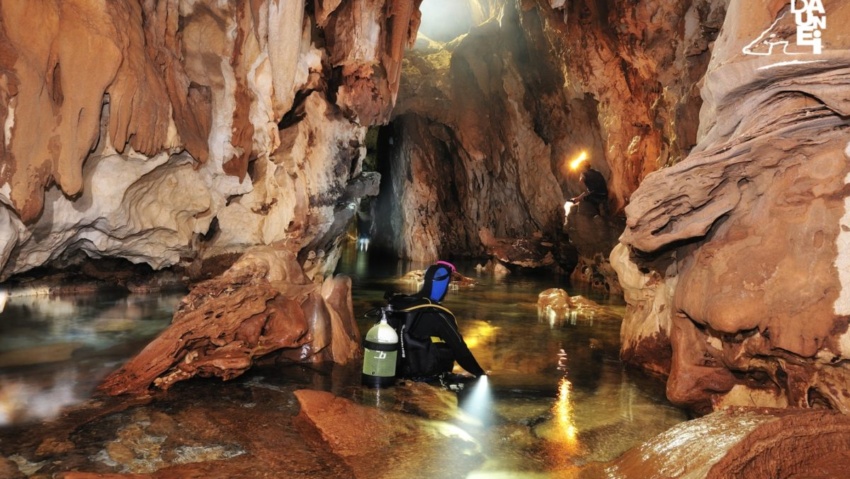Baunei’s Coast,
Cala Goloritzé
The slender limestone peak towering over the beach, the arc of rock plunging into the sea, the transparent water that could not be more transparent. All framed by mountainous ridges hundreds of metres high covered by the intense green of the Mediterranean maquis. This and more is ‘Cala Goloritzè’ (‘Natural Monument’ since 1993), now a true ‘testimonial’ of this wild and unspoilt coastline. According to the stories of the shepherds of Baunei who lived in sheepfolds in the area, this spectacular sandy shoreline was formed in the 1950s, following a landslide that broke away from the sandstone wall.
Until the 1980s, the tiny beach of Cala Goloritzé was mainly frequented by free-climbing lovers, thanks to the echo it received from the exploit performed by the famous climbers Maurizio Zanolla, from Trentino, and Alessandro Gogna, from Genoa, who were the first to conquer the peak of Punta Caroddi in 1981. Maurizio Zanolla, better known as ‘Manolo’, is considered the father of sport climbing in Sardinia, since he ‘imported’ free climbing to the island in 1979, when, as a young rock climber specialised in rockfalls, he was working on securing some unsafe rock faces along the Orientale Sarda road.
The first inhabitant of Baunei to climb to the top of Punta Caroddi was, in 1986, a climbing enthusiast, Mario Monni, at the time a 26-year-old pedalo hirer at Cala Luna. The first excursion guides from Baunei to conquer the Aguglia were Antonio Cabras and Mariano Lai, in 1996. Today, Cala Goloriztè is a popular destination for all those who seek that incomparable mix of sea and mountain in the Supramonte of Baunei that is difficult to find elsewhere in Sardinia. Since 1989, it has been forbidden to anchor less than 300 metres from the shore and therefore the beach can only be reached by land, starting from the Golgo plateau, from the locality ‘Su porteddu’.
During the summer, the beach is consequently stormed every day by hundreds of hikers, who reach it by taking the path along the ‘Baccu Goloritzè’. Two hundred metres to the north of the main beach is the small beach known as ‘delle Sorgenti’ because of the spring waters that flow through the rocks. In particular situations of calm sea and low tide, fresh water springs a few centimetres above the shoreline.
The existence of this precious source was well known to the shepherds of the area, who, in order to fill their ‘barrìla’ (a small water flask), faced the difficult passage (you have to walk on a smooth limestone slab on a steep slope) leading to the fresh water.
